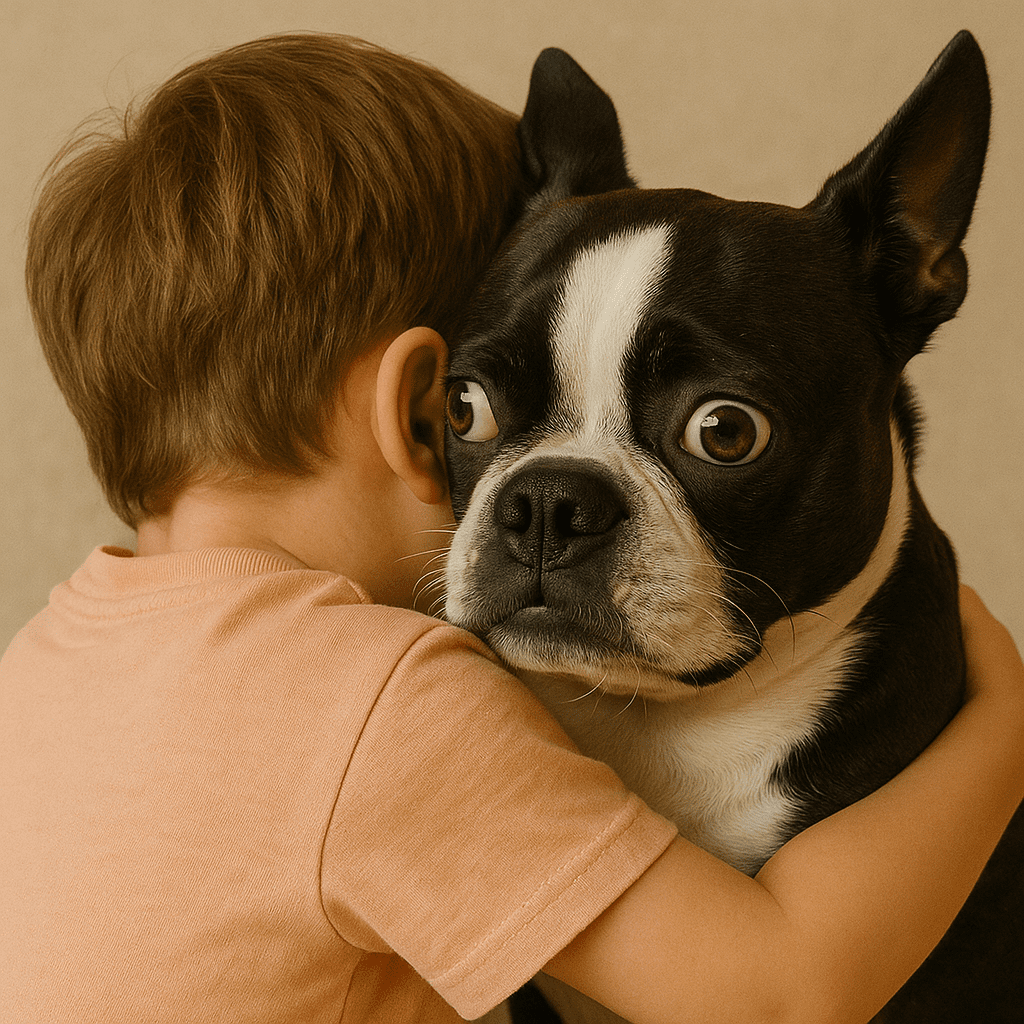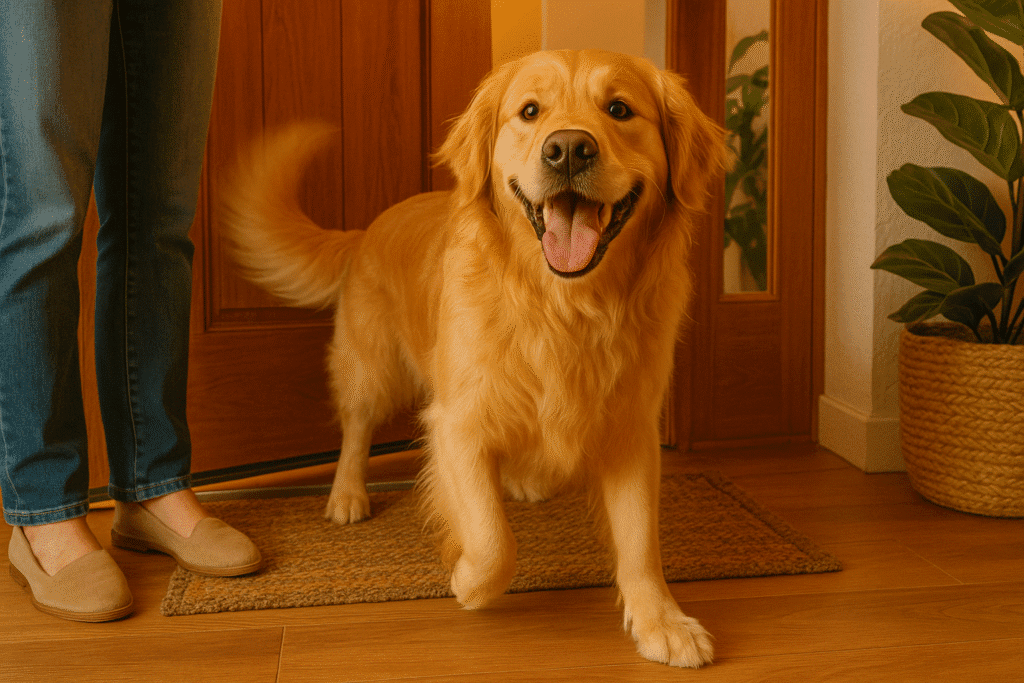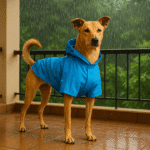A Beginner’s Guide to Dog Body Language (Stress & Happy Signals)

Fluent in Fur: How to Read Your Dog Body Language from Head to Tail
Our dogs are talking to us all the time. They don’t use words, but they speak a rich, complex, and eloquent language through every flick of an ear, wag of a tail, and subtle shift in their posture. Learning to understand this silent language is one of the most important skills a dog owner can develop. It transforms your relationship from one of simple companionship into a true, two-way conversation, deepening your bond and dramatically improving your dog’s wellness.
When you can recognize the subtle signs of stress before they escalate, or confidently identify the signals of a truly happy and relaxed dog, you become a better advocate, trainer, and friend to your pet. This guide will serve as your beginner’s translation dictionary, helping you move beyond the basics and become fluent in the language of your dog, from the tip of their nose to the end of their tail.
The First Rule: It’s a Full-Body Conversation
Before we dive into specific body parts, remember this golden rule: context is everything. You must look at the entire dog, not just one part. A wagging tail on a tense, stiff dog means something very different from a wagging tail on a relaxed, wiggly dog. Always assess the whole picture to get the true meaning of what your dog is trying to communicate.
Decoding the Tail: More Than Just a Wag
The tail is one of the most expressive parts of a dog, but its signals are widely misunderstood. A wag doesn’t always mean “happy.”
- A Soft, Sweeping Wag: Often at mid-height, this is the classic “happy and relaxed” wag. The dog’s whole body might wiggle along with it.
- A High, Fast, “Helicopter” Wag: A broad, circular wag. This is usually a sign of extreme excitement and friendliness, often reserved for greeting a favorite person.
- A High, Stiff, “Flag” Wag: The tail is held high and moves back and forth in short, fast, stiff motions. This is a sign of high arousal and alertness. It’s not necessarily aggressive, but it’s a “pay attention” signal.
- A Low, Slow Wag: This can indicate uncertainty, insecurity, or appeasement. The dog is often trying to say, “I’m not a threat.”
- A Tucked Tail: A tail tucked tightly between the legs is a clear sign of fear, stress, or submission. This dog is very worried.

The Telltale Face: Eyes, Ears, and Mouth
A dog’s face is a canvas of emotion. Paying attention to the subtle changes can tell you everything.
Eyes
Soft, relaxed eyes with normal-sized pupils indicate a calm dog. A hard, unblinking stare can be a sign of a threat or challenge. But the most important signal to learn is “whale eye,” where a dog turns its head slightly away but keeps its eyes on a perceived threat, showing the whites of its eyes in a crescent shape. This is a clear sign of anxiety and stress.
Ears
A dog’s ears act like satellite dishes for sound and emotion. Soft, neutral ears are relaxed. Ears perked forward mean they are interested and focused on something. Ears pinned flat against the head are a major sign of fear, anxiety, or extreme submission.
Mouth
A relaxed, happy dog will often have a soft, slightly open mouth, sometimes with a gentle pant. A tense, closed mouth indicates stress or alertness. A dog pulling its lips back to show its teeth is giving a clear warning signal. Pay attention to a lip lick when no food is present; this is a very common sign of stress or uncertainty.
The Secret Language: Recognizing Calming Signals
Dogs use a series of specific behaviors, called “calming signals,” to de-escalate stressful situations and communicate that they are not a threat. Learning to spot these is like learning a secret language that can help you prevent problems before they start.
- Yawning: A big yawn when the dog is clearly not tired is a very common way they deal with stress or anxiety.
- Sniffing the Ground: Suddenly becoming intensely interested in sniffing the ground can be a way for a dog to ignore something that is making them uncomfortable.
- Shaking Off: You’ll see this after a stressful event, like a near-miss with another dog or after a vet visit. It’s a physical way for them to “shake off” the stress.
- Turning the Head/Body Away: This is a polite way for a dog to say, “I’m not comfortable with this situation, and I would like to disengage.”

Putting It All Together: The Happy Dog vs. The Stressed Dog
A Happy, Relaxed Dog Looks Like:
A loose, wiggly body and posture. Soft eyes with relaxed pupils. A soft, slightly open mouth. Ears in a neutral, relaxed position. A gently sweeping or “helicopter” tail wag.
A Stressed, Anxious Dog Looks Like:
A tense, low, or rigid body posture. A tucked tail. “Whale eye” and dilated pupils. Pinned-back ears. A closed mouth, panting when not hot, or constant lip licking and yawning.
Conclusion: Deepening Your Bond Through Observation
Learning to read your dog’s body language is an ongoing journey, not a final destination. The more you watch and listen, the more you will understand. This skill is the foundation of positive training, effective socialization, and proactive dog wellness. By understanding when your dog is happy, when they are curious, and—most importantly—when they are asking for space or help, you become the safe, predictable, and trustworthy leader they need you to be. You’re no longer just an owner; you’re a fluent speaker in the beautiful, silent language of your best friend.



